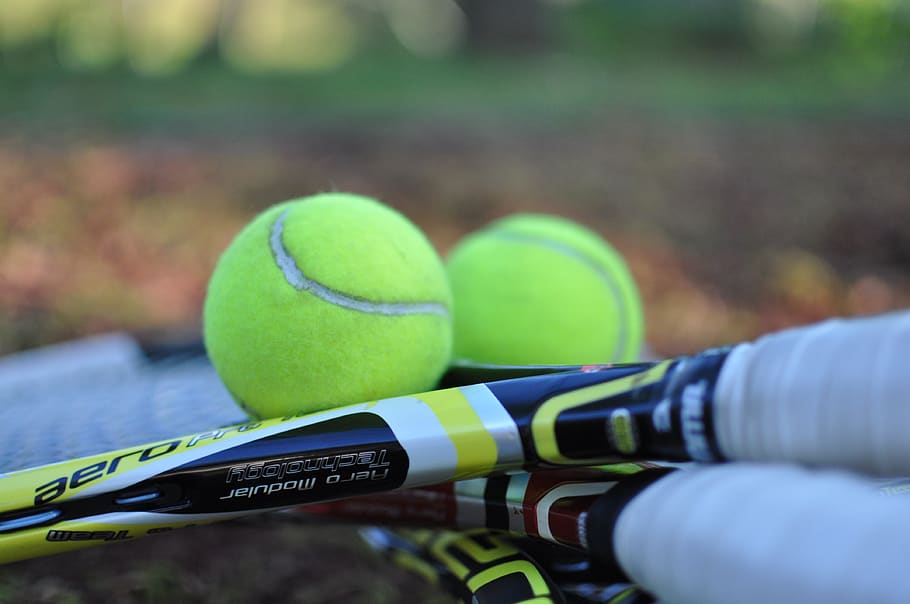 Modern tennis seems to have started with a British (GB) patent of 1874 titled “New and Improved Court for Playing the Ancient Game of Tennis” obtained by Major Walter Clopton Wingfield. With that, he started selling rubber balls imported from Germany, a net, poles, court markers, and racquets, as a set. It also contained an instruction manual. Even though that patent itself appears accessible, here is one obtained by Wingfield that is also connected with tennis: https://tinyurl.com/jpmcwuhp
Modern tennis seems to have started with a British (GB) patent of 1874 titled “New and Improved Court for Playing the Ancient Game of Tennis” obtained by Major Walter Clopton Wingfield. With that, he started selling rubber balls imported from Germany, a net, poles, court markers, and racquets, as a set. It also contained an instruction manual. Even though that patent itself appears accessible, here is one obtained by Wingfield that is also connected with tennis: https://tinyurl.com/jpmcwuhp
From then on, the game steadily gained popularity and underwent many little changes. The racquet was a wooden elliptical frame with a handle, strung with animal gut – often made from serosa of bovine intestines. Racquets remained practically unchanged for a long time but underwent improvements slowly. For example, solid wood was replaced with laminated wood and gut replaced by strings of nylon and other materials. Even then, natural guts are said to be the choice of professionals.
The first great change in racquets came when metal frame racquets were introduced by Wilson Sporting Goods®. However, it was not their invention but of the French tennis great, Jean-Rene Lacoste, around 1965. Here is one example of a number of patents obtained by Lacoste. https://tinyurl.com/mr44u5zd. Metal racquets were possible because Lacoste also invented and patented metal loops that allowed metal frame racquets to be strung. Without them, the guts broke often.
(Lacoste was one among the four French tennis greats nicknamed the “Four Musketeers”: Jean Borotra, Jacques Brugnon, Henri Cochet, René Lacoste. Lacoste was nicknamed ‘the Crocodile’ and hence a stylised image of a crocodile is the logo of the now famous sports goods brand Lacoste®)
Metal racquets had other problems. For example, if the ball were not hit from the centre of the racquet head (the sweet spot), the racquet got temporarily distorted and where the ball would end up was quite unpredictable. This was not a property that professionals liked. They wanted something stiffer so that they knew where the ball would end up! This brought on the “graphite” revolution.
The new racquets are referred to as “graphite” but are actually made of a combination of carbon fibre and resins. Carbon fibre offers the twin advantages of stiffness and light weight. Since its introduction, there has been a search for newer and better combinations of materials for racquets. On the other hand, the stiffness of the metal racquet head can also be increased by increasing the thickness of the frame. This innovation led to the widebody racquets which saw nearly 40 mm wide frames. Things are not so extreme now and have settled down to more moderate widths.
A keen tennis enthusiast will notice two things. The players are always fiddling with their racquet strings between points. What they are doing is adjusting the strings to be parallel to one another in each direction. They have to do this to have a predictable and uniform feel to the shots as the strings get displaced every shot. The other thing that you notice is small button-like things stuck to the strings. You might even see the players running to their seats to get a new one, when they notice that one has fallen off. These are called string vibration dampeners or just dampeners. These are rubber parts that dampen the vibration of the string caused by the racquet hitting the ball. Its main purpose is to stop the strings from vibrating for long after a shot is hit. It has the effect of making the sound of shots deeper. Here is a patent on the humble dampener! https://tinyurl.com/38ffr6ja
You may have heard that certain complex products use technologies from hundreds, if not thousands, of patents. However, even a relatively simple piece of sports equipment such as a racquet could be protected by and be using technologies from a large number of patents! While there are a large number of patents related to tennis, here is a list of the leading brands of racquets and the degree of their presence in the patent world: Head® – 121, Wilson® – 108, Yonex® – 60, Dunlop® – 200, Prince® – 80. It may be that many of these manufacturers have also obtained licenses to use technologies created and patented by others too.
https://www.liveabout.com/an-evolutionary-history-of-tennis-racquets-3208185



